We Believe Music Can Change the World
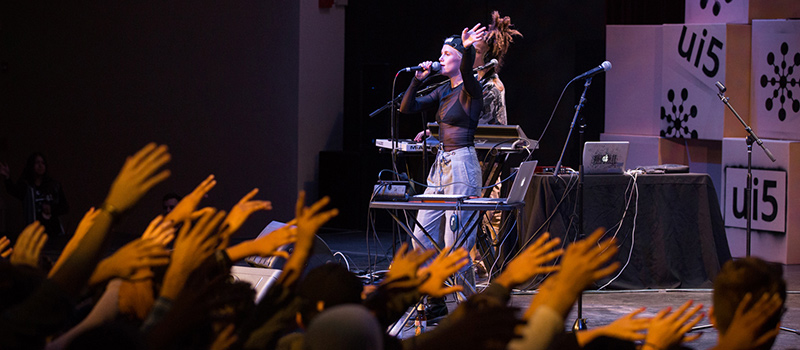
Grammy Award-winning artist Grace Weber and her band perform at the University Innovation Fellows program’s ui5 celebration on November 19, 2017. Photo by Patrick Beaudouin.
450 University Innovation Fellows and faculty took part in a star-studded event to design ways for music to solve problems and bring awareness to social causes.
by Laurie Moore
The scene was wonderfully chaotic. Throughout the many spaces of the d.school at Stanford University, music blared from cell phones, speakers, and out of headphones. One group of students built a guitar out of cardboard and sticky notes. Another group role-played an idea that would connect people to volunteer opportunities in exchange for concert rewards. Others crowded around whiteboards filled with sketches and notes that represented ideas for ways to use music to benefit society.
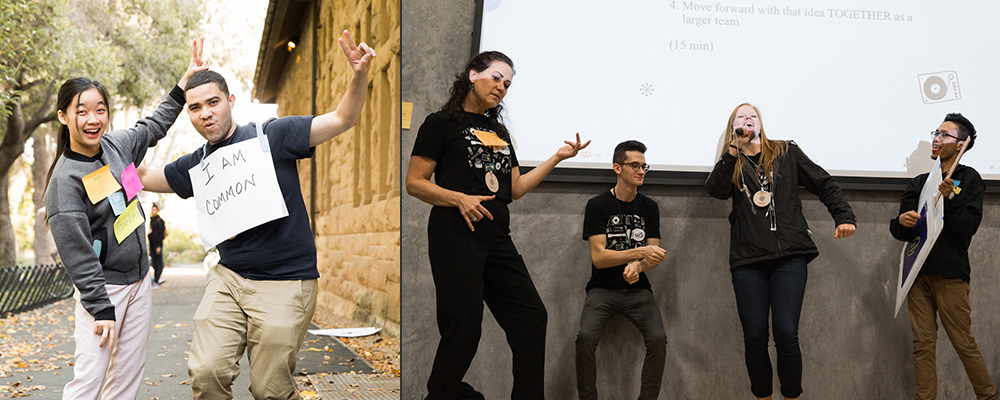
University Innovation Fellows prototype their solutions to the music-themed challenges during the ui5 celebration. Photos by Patrick Beaudouin.
The ui5 event brought together 450 University Innovation Fellows and faculty members from around the world to tackle music design challenges sponsored by artists and their foundations and initiatives. The event, held on Sunday, November 19, 2017 at Stanford, was a celebration of the University Innovation Fellows program’s five-year anniversary. It was one of several university music design challenges sponsored by Pandora and Real Industry, and partners for this event included Google, Microsoft and Nearpod.
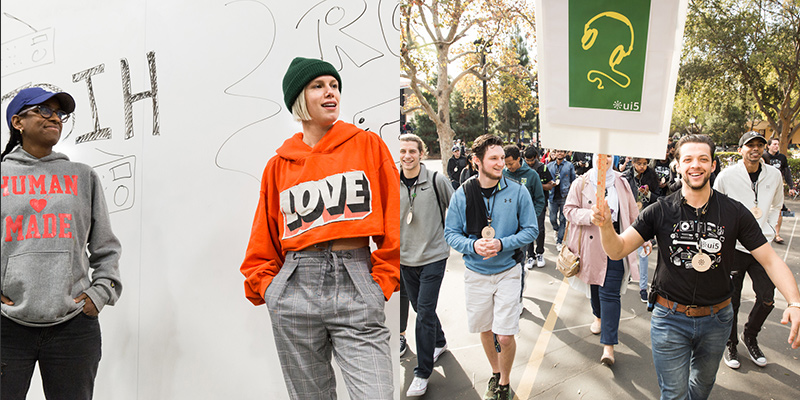
Left: Binta Niambi Brown of Fermata Entertainment Ltd. and singer Grace Weber introduce their design challenge; Right: Fellow Sean Farrell leads his design challenge team to Stanford’s d.school. Photos by Patrick Beaudouin.
Attendees worked in small teams on four design challenges: how to encourage wellness and mental health in communities of color (Common and the Common Ground Foundation); how to integrate musical experiences into K-12 education (Grace Weber and The Music Lab); how to motivate concert going fans to engage in socially-conscious actions supported by artists (Incubus and The Make Yourself Foundation); and how to raise awareness about Ewing Sarcoma among college students (Manchester Orchestra and the 1 Million 4 Anna Foundation).
Teams received hands-on mentoring directly from industry leaders: Pandora Artist Marketing Manager Heather Ellis, Common’s Social Impact Advisor Michael Latt, The Make Yourself Foundation’s Director Brandon Deroche, and Real Industry’s Directors Jay LeBoeuf and Priyanka Shekar.
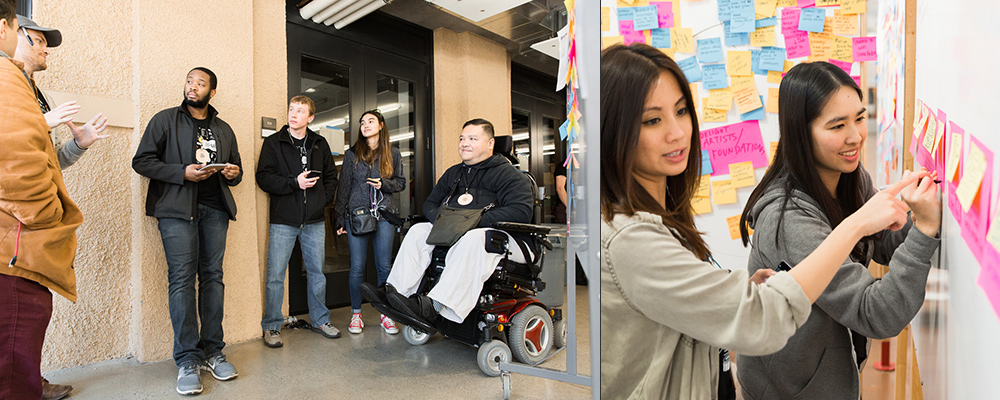
Left: A team of Fellows work on their project, mentored by August de los Reyes, Head of Design at Pinterest; Right: Fellows storyboard their idea for a video. Photos by Patrick Beaudouin.
“Music is a common bond that we can use to establish relationships,” said Jaclynn Siler-Dearring, a Fellow at North Carolina A&T State University and one of 18 Fellows who facilitated the design challenge. “No matter who you are or what you’re doing, there’s some kind of music that you can relate to and that can help you express what you’re going through. So we’re using music to tackle these issues.”
As part of the challenge, students were asked to prototype their solutions in the form of a video. Their ideas included playing music on school buses to engage young students, volunteering as a means to connect college students and give them access to concerts, and a health and wellness center that would creatively use the brand of an artist to reach underserved populations.
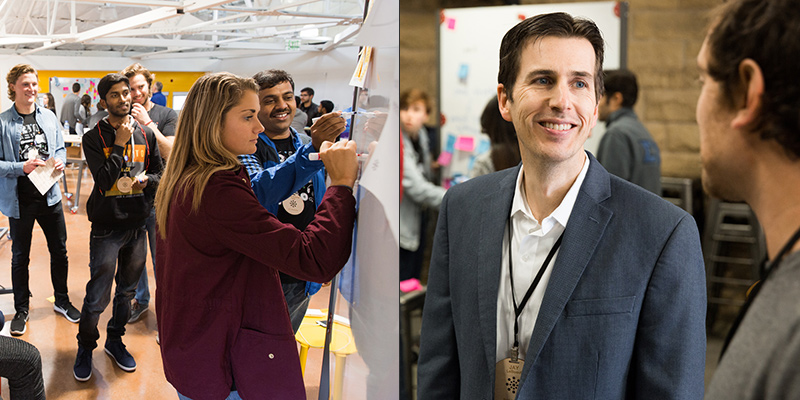
Left: Fellows working out the details of their design challenge solution; Right: Mentor Jay LeBoeuf, Executive Director of Real Industry, gives feedback to a Fellow. Photos by Patrick Beaudouin.
“We’re going to take the ideas and output from these students and share them with the artists and foundations,” said Jay LeBoeuf, Executive Director of Real Industry. “This is a diverse group of students who at this point are experts at design thinking. They’re using their fresh perspectives to tackle problems we’ve been trying to solve for years.”
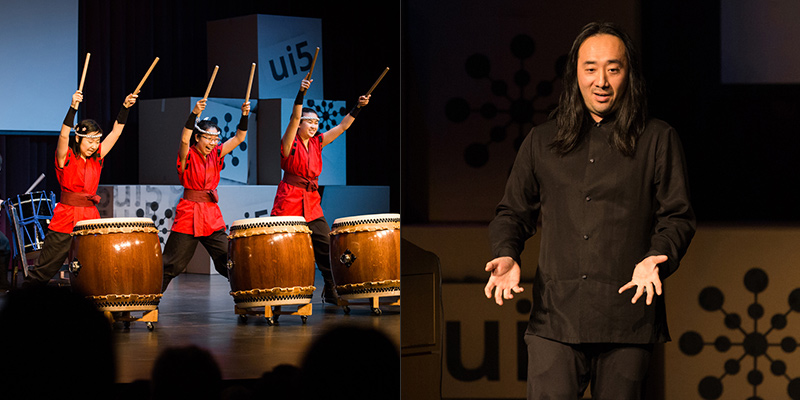
Left: Stanford Taiko drummers perform for the crowd; Right: Stanford’s Ge Wang discusses the connections between music and design; Photos by Patrick Beaudouin.
In addition to the design challenge, the day also featured a talk by Ge Wang, a professor in Stanford’s Center for Computer Research in Music and Acoustics, on how music and design can bring people together; a performance by Stanford’s Taiko drummers; and a panel talk with Pandora’s Chief Product Officer Chris Phillips and Grammy Award-winning artist and singer Grace Weber. Weber is deeply committed to leveraging the power of music to advance social causes; she recently launched The Music Lab, a non-profit organization in Milwaukee that builds community through music.
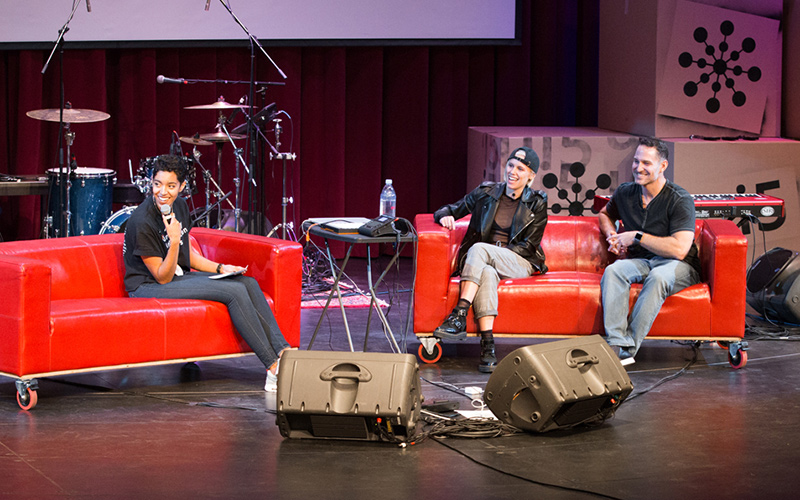
From left: Fellow Nadia Gathers introduces singer Grace Weber and Pandora’s Chief Product Officer Chris Phillips. Photo by Patrick Beaudouin.
After the panel talk, Grace Weber and her band performed to an audience of nearly 500, which included special guests — a group of Oakland high school students, participants in Grace Weber Music Lab Pop-up at Stanford. At the end of the concert, Fellows rushed the stage to sing along, dance, and pose for a full-auditorium selfie with the singer. The event concluded with a music and dance party in the d.school’s atrium.
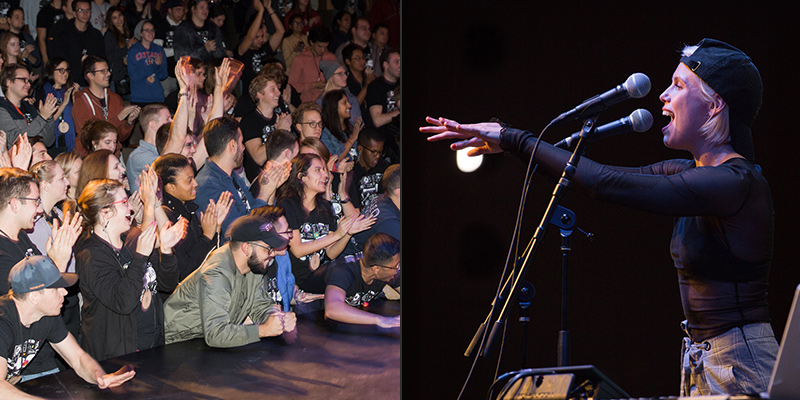
Fellows rushed the stage during Grace Weber’s performance. Photos by Patrick Beaudouin.
The ui5 event was a first for the University Innovation Fellows program: a day-long design challenge focused on music, the largest gathering of Fellows in the program’s history, and a concert with a talented singer. For the Fellows, it was a unique opportunity to dive into the world of music, one they are all familiar with, and apply their design thinking skills to solve real-world problems.
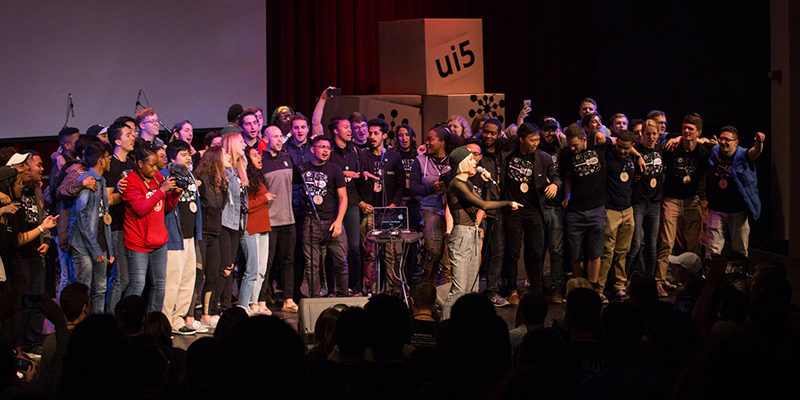
Grace welcomes the Fellows up on stage at the end of the concert. Photo by Patrick Beaudouin.
“Seeing students from all around the world working on problems from different perspectives was so refreshing,” said Jon Cook, a Fellow from Grand Valley State University. “Music is something that’s close to my heart, so applying design thinking to a field I’m so passionate about is something I haven’t done in a long time.”
“I’ve never put music and design thinking together before,” said RJ Lualhati, a Fellow from La Salle University. “We worked with artists to solve big problems. We can do this with music!”





Leave a Reply
Want to join the discussion?Feel free to contribute!